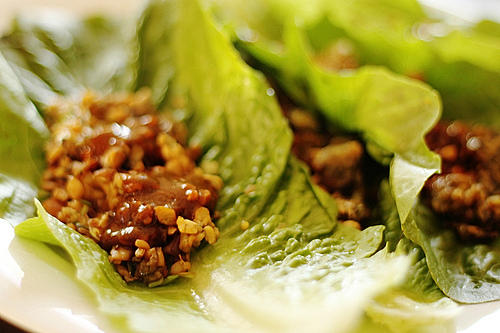Let’s be honest, tofu is kind of…not good?? I first experimented with Tempeh a few years ago and wasn’t sure exactly what to do. Thank you to the Indonesians, I have come across hundreds of ways to prepare and eat this forgiving and delicious protein alternative! My favourite? Peanut butter/soy sauce marinated tempeh, friend and ground up for fresh lettuce tacos!
If you don’t like the taste and texture of tofu, there’s something much better — Tempeh. Like tofu, it’s made from soybeans, but there are some big differences in taste, texture, and nutrition.
Tempeh is made by fermenting cooked soybeans with a mold, usually Rhizopus oligosporus, and mixed with other whole grains. The process creates fine white filaments that cover and bind the mixture into a firm cake.
Tempeh’s health benefits
This vegetarian superfood has all the same health benefits as Tofu. It . .
-
Reduces cholesterol
-
Increases bone density
-
Reduces menopausal symptoms
-
Provides faster muscle recovery
-
Satisfies hunger, and
-
Has the same protein quality as meat
Plus, the fermentation process adds even more health benefits.
More vitamins
Studies show that the fermentation process increases the amount of riboflavin, vitamin B6, nicotinic acid (niacin), and pantothenic acid.
Pantothenic acid.
-
Plays an important role in the release of energy from fats, protein, and carbohydrates
-
Is well know for keeping skin healthy and preventing it from premature aging, and
-
Helps keep hair from turning gray prematurely
Vitamin B6
-
Helps the body make neurotransmitters (chemicals that carry signals from one nerve cell to another)
-
Is essential for normal brain development and function
-
Helps the body make melatonin (a hormone that regulates sleep patterns), and both serotonin and norepinephrine (mood influencers)
Nicotinic acid. Raises HDL cholesterol levels, reduces triglyceride levels, and lowers LDL cholesterol. Good news for heart health.
Riboflavin. Four ounces of tempeh provides 23.5% of the Daily Value forriboflavin, while Tofu provides none. Riboflavin plays an important role in producing energy, and regenerating a critical liver detoxification enzyme, glutathione.
Better nutrient absorption
A big negative with soybeans, grains, and legumes, is they’re high in phytic acid. Phytic acid interferes with the absorption of zinc and other essential minerals, including calcium, magnesium, and copper.
Soybeans have the highest levels, but when they’re fermented to make tempeh, the amount of phytic acid decreases significantly. One study shows the fermentation process reduces the phytic acid content by one half. When it was also fried in peanut oil, less than 10% of the phytic acid was left.
Less Fat
Four ounces of soy has only 3.7 grams of saturated fat and less than 225 calories. The fermentation process has been shown to lower the fat content even more.
Easy to cook with and more versatile
Tempeh is great to cook with. It absorbs other flavors quickly, has a mild, nutty flavor, and is easy to digest.
What’s more, it crumbles easily so it’s perfect to use in place of chopped meat in any recipe. Or, you can slice or cube it for frying, stir frying, and sautéing.
Tempeh is not a new vegetarian food. In fact, it’s been a staple in Indonesian diets for the past 2,000 years. It’s now growing in popularity in the U.S. and is becoming a favorite for vegetarians. Once you try it, you’ find a lot of ways to incorporate it into your recipes.
-Wellness Wednesday Wisdom by Breathe in Life guide and holistic nutritionist, Meghan Trompetter
